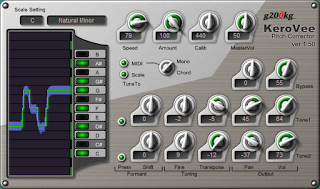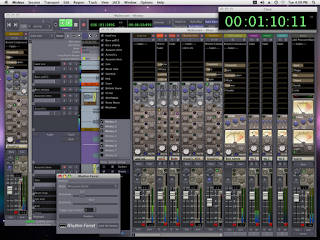Hello and welcome to this week's article! Today we're going to talk about Drum Replacement!
Drum replacement is a very common technique nowadays, and it consists in taking the peaks of a drum track (an audio track, or even a MIDI) using a level analizer, setting a threshold like we're using a Compressor, and every peak that exceedes that threshold is considered by the program a hit to be replaced with a midi sample of our choice.
This technique can be used to replace virtually anything with any sample, but it has been developed specifically for drums, because this is the application where it really turns out to be useful: to add the sound of an already processed snare, kick or tom to the original sound we have recorded and blend them, in order to give more punch, clarity and "professional vibe" to our songs.
Those plugins usually gives you the opportunity to "refine the search" of the peaks to be replaced, supporting Equalization filters and a volume fader, in order to isolate as much as possible the range of sounds to be processed, since it's a common problem to have replaced more sounds that we need, for example a long-tailed snare hit may be interpreted as more than one single sound so the plugin may add a double or triple hit on it. It takes some practice to set up the software so that only the sounds we need are replaced.
- The first and best drum replacement program around is Drumagog, it comes with some sample bundled sample and lets you use Wave files and the proprietary .GOG standard, which supports multisampling in order to assign the right sample according to the Velocity of every hit.
Another very interesting and useful feature is the "Blend" control, that lets you choose the percentage of original and triggered sound you want, mixing them.
- The second plugin I suggest is Slate Drums, which is a bit more expensive but comes in bundle with great samples.
- The third plugin in order of quality is ApTrigga, which is cheap, light, and very effective.
- Drumtrig, is FREE, and very easy to use. Similiarly to Aptrigga, Drumtrig has a clean interface, but with less controls.
- Boxsounds Replacer, is FREE and lets you load up to four sample layers.
- KTDrum Trigger is another FREE plugin that allows you replace sounds, and this one supports up to three different frequency bands, thus is possible to replace more than one sound at the same time (anyway is suggested to open a single instance for every single drum part, to avoid errors).
Now we must choose the right samples. There are many sample packs around, and among them a very good pack is LSD DRUMS, or the Slate Drums pack, but surfing the web you can also stumble upon some good free sample library, just try searching on the Ultimate Metal and the Mixingtips forum. You can even create your own samples by microphoning a real drum or ripping the single samples from your favourite album, just make sure to find a song where the drum part is playing alone, or you will sample something of the other instruments too!
Once we have replaced all the drum parts we need (usually snare, kick and toms, since is not a good idea to replace the cybmals as the sampled ones tend to sound a bit "unnatural"), it's time to head to the "cleaning" part: clean all the midi drum tracks of the "double hits" accidentally taken by the software, correct the eventual timing and quantization errors (if the samples are replacing a real microphoned drum track), adjust the Velocity to the right levels when needed (just remember to not make it completely flat or you will lose all the dynamics of the drumming), and after this phase we will have a perfectly edited triggered drum track, which is ready to be mixed (and with the right samples, more than 50% of the mixing job is already done!).



